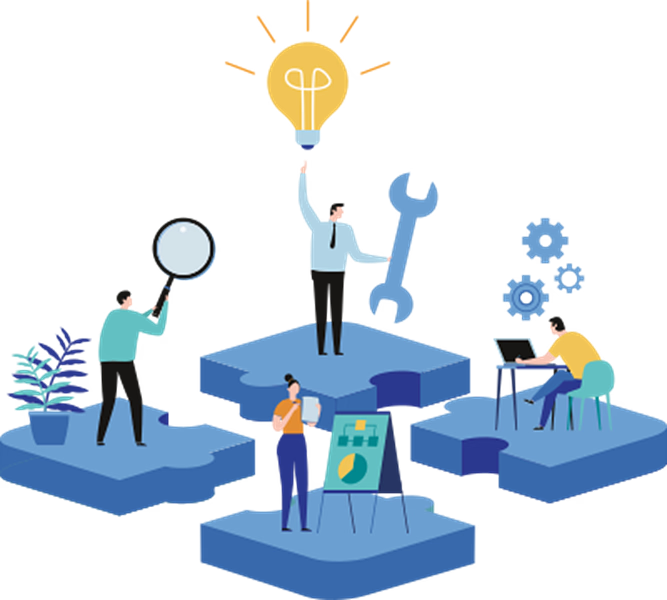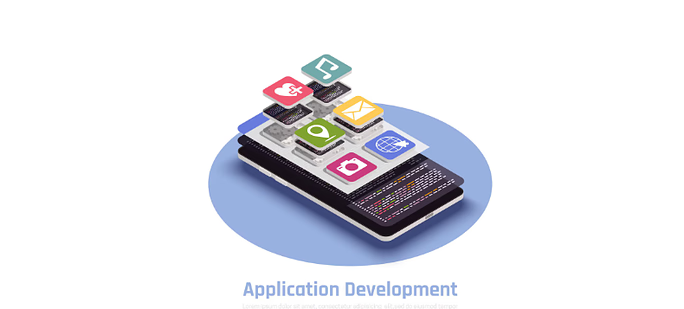Blockchain Programming: Building the Brains Behind Decentralized Innovation

Introduction: Why Blockchain Programming Is Driving the Next Tech Revolution?
You’ve heard about Bitcoin. Maybe Ethereum. Possibly NFTs. But have you ever wondered what makes these technologies tick? Behind every token, decentralized app, and trustless system lies one powerful force—blockchain programming.
Whether you’re a startup founder, CTO, or enterprise tech decision-maker, understanding blockchain programming isn’t just “nice to have” anymore—it’s a competitive necessity.
In this blog, we’ll decode what blockchain programming really means, how it powers real-world innovations, and how Ideas2Goal delivers enterprise-ready blockchain solutions that go way beyond buzzwords.
What Is Blockchain Programming?
Blockchain programming refers to writing the core logic and code that enables blockchain-based applications to run. This includes everything from:
- Smart contract development (e.g., using Solidity, Rust, or Vyper)
- Crypto wallet and token logic
- Decentralized application (dApp) backend development
- Blockchain bridging protocols
- Security logic and auditing scripts
Unlike traditional software development, blockchain programming happens in distributed environments where security, immutability, and decentralization are baked into the codebase.
Why Does Blockchain Programming Matter?
Imagine writing code that becomes permanent once deployed. No patch updates. No backend rollbacks. No admin overrides. That’s what makes blockchain so powerful—and also so risky.
Done right, blockchain code can:
- Automate transactions via trustless smart contracts
- Replace third-party systems with secure decentralized protocols
- Create new business models (e.g., DAOs, tokenized economies)
- Guarantee data integrity and auditability across users
But done wrong? Bugs can cause millions in lost funds. That’s why companies trust experts like Ideas2Goal to write bulletproof blockchain applications.
Blockchain Programming vs Blockchain Development: Know the Difference
These terms are often used interchangeably, but they’re not quite the same:
Blockchain Programming | Blockchain Development
Writing blockchain-specific code like smart contracts | Building full blockchain systems (frontend, backend, infra)
Uses languages like Solidity, Rust, Vyper | Uses frameworks + design tools (e.g., Web3.js, Hardhat)
Focused on core logic, validation, security | Covers user interface, user experience, deployment
Who does it? Blockchain programmers / engineers | Who does it? Full-stack blockchain developers
Writing blockchain-specific code like smart contracts | Building full blockchain systems (frontend, backend, infra)
Uses languages like Solidity, Rust, Vyper | Uses frameworks + design tools (e.g., Web3.js, Hardhat)
Focused on core logic, validation, security | Covers user interface, user experience, deployment
Who does it? Blockchain programmers / engineers | Who does it? Full-stack blockchain developers
Ideas2Goal offers both, making them a one-stop shop for your next blockchain project—from code to launch.
What Technologies Power Blockchain Programming?
Here are the most popular tools and languages blockchain engineers use today:
- Solidity: The most widely used language for writing smart contracts on Ethereum and compatible networks (e.g., BNB Chain, Polygon).
- Rust: Used in high-performance blockchains like Solana and Polkadot, offering speed and memory safety.
- Vyper: A Pythonic alternative to Solidity with a focus on simplicity and security.
- Web3.js & Ethers.js: JavaScript libraries that let developers connect dApps with blockchain networks.
- Truffle, Hardhat, Ganache: Toolkits for testing, deploying, and managing smart contracts locally before pushing live.
At Ideas2Goal, developers are proficient in these platforms and toolchains, ensuring reliable, future-proof solutions for enterprise use.
Enterprise Use Cases of Blockchain Programming
1. DeFi Platforms
Code smart contracts that allow users to lend, borrow, swap, and stake cryptocurrencies with no intermediaries.
2. NFT Marketplaces
Program NFT logic (minting, buying, royalties) and backend metadata systems.
3. Supply Chain Tracking
Use blockchain to log every step of a product’s journey—uneditable, real-time, and transparent.
4. Healthcare Data Exchange
Enable secure and privacy-preserving health data sharing through encrypted smart contracts.
5. Cross-Chain Bridges
Build blockchain bridges for seamless asset transfers between Ethereum, Solana, and others.
Ideas2Goal’s blockchain team has deployed solutions across all of the above verticals and more.
How Ideas2Goal Delivers Blockchain Programming Projects
Let’s break down the process Ideas2Goal follows for a typical blockchain programming engagement:
Step 1: Discovery
Understanding your business goals, use case, and preferred blockchain ecosystem (Ethereum, Solana, BSC, etc.)
Step 2: Architecture Design
Defining smart contract logic, user flows, and decentralization requirements
Step 3: Smart Contract Programming
Actual coding using Solidity, Rust, or Vyper with industry best practices and security audits
Step 4: Testing & Simulation
Simulating every possible user interaction to ensure zero bugs or exploits (using Hardhat, Ganache, Truffle)
Step 5: Deployment & Monitoring
Launching to the mainnet and monitoring via tools like Etherscan, The Graph, or Dune Analytics
Contact the Ideas2Goal team if you’re ready to begin this journey.
Blockchain Programming Trends in 2025
According to Statista, global blockchain tech revenue is expected to reach $94 billion by 2027. Here’s what’s trending right now:
- AI + Blockchain: AI models embedded into smart contracts for self-learning dApps
- Interoperability: Cross-chain communication protocols are gaining adoption
- Enterprise Layer 2 adoption: Scalable L2s like Arbitrum and Base are used by businesses
- DAO Expansion: More companies are tokenizing voting rights and ownership
- Green blockchain programming: Energy-efficient consensus algorithms and code
By leveraging next-gen tools, Ideas2Goal stays ahead of the curve and ensures your blockchain strategy is built for what’s next.
Integrating Blockchain Programming With Custom Software
Blockchain doesn’t live in a silo. For real business impact, it must integrate with existing systems.
That’s why blockchain programming is often paired with:
- ERP and CRM platforms
- E-commerce systems
- Cybersecurity layers
- Mobile and web frontends
At Ideas2Goal, the team builds custom software that merges blockchain capabilities with traditional systems for seamless deployment.
FAQs on Blockchain Programming
Q1. Can any developer write blockchain code?
Not really. Blockchain programming demands a different mindset—security-first, decentralized, and immutable. Specialized knowledge is required.
Q2. What’s the most beginner-friendly blockchain language?
Solidity is the most popular starting point, especially for Ethereum-based applications.
Q3. Is blockchain programming only for crypto?
Nope! Blockchain is now widely used in healthcare, supply chain, gaming, voting systems, and even climate tech.
Q4. How long does it take to build a blockchain app?
Anywhere from 2 to 6 months, depending on complexity. The programming phase (smart contracts, tokens, wallet logic) typically takes 4–8 weeks.
Final Thoughts: Why Blockchain Programming Is Worth the Investment
We’re in a decade defined by decentralization. From finance to identity, logistics to governance, blockchain is changing how we interact with the digital world—and it’s all driven by powerful programming under the hood.
Whether you’re a startup founder looking to launch a crypto token or an enterprise CTO exploring secure data exchanges, blockchain programming is where your journey begins.
And when you’re ready to build, Ideas2Goal is here to help—with years of experience, platform mastery, and a focus on enterprise-grade blockchain success.
Ready to Transform Your Idea Into a Decentralized Reality?
Get in touch with the Ideas2Goal blockchain team and start building smarter, safer, and future-ready.



